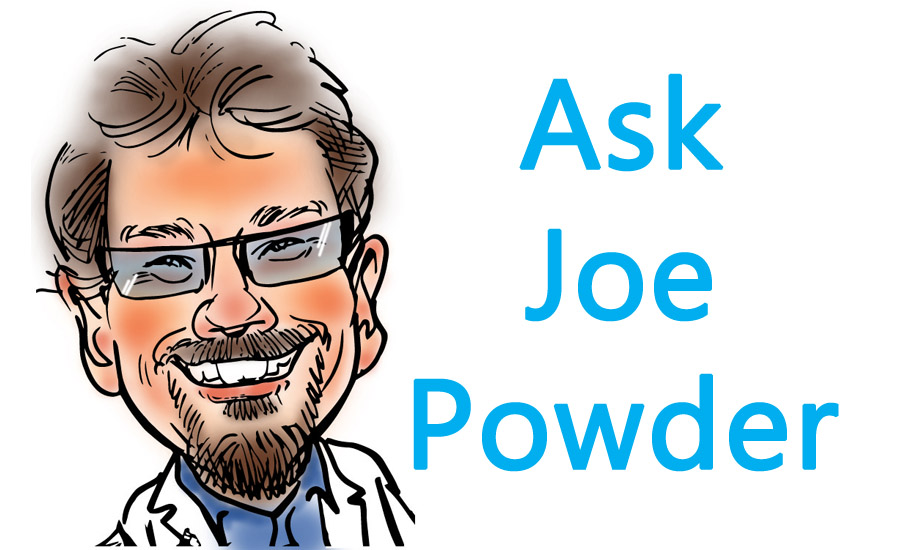Cured powder does not stick readily to edges...

Hi Joe,
I don’t know if you have covered this before. We notice that the cured powder does not stick readily to edges that have been cut by a laser. What are the causes of this and what can be done to overcome the adhesion issues?
Brian Gurney
S&S Technology
Hi Brian,
Nope, this is a first time question. Cutting steel with a laser offers many advantages including precision, speed, less rejects and low labor costs. However one of the problems inherent to laser cutting is the blue oxide edge it leaves on carbon steel. Powder coatings don't like to adhere to this oxidized surface. Conventional iron or zinc phosphate pretreatments don’t adequately penetrate the oxide to provide adhesion of the cured powder. This results in a loss of adhesion and the potential for serious corrosion problems.
There are a few paths to compensate for this shortcoming. One is to employ a more aggressive pretreatment process. Using a strong acid etch prior to the phosphate stage can attack the oxide layer enough to allow the phosphate to do its thing.
Another option is to avoid creating the oxidation by using nitrogen in the laser cutting process. It's more expensive than using oxygen but it minimizes oxidation from the laser and therefore allows a conventional iron or zinc phosphate process to provide a surface more amenable to adhesion of a cured powder.
A third option is physically abrading the edges. This can be accomplished either automatically (blasting or wheel abrading) or manually. If you opt for a blasting process it is imperative to keep your media clean, otherwise you can contaminate the surface you are attempting to clean. ScotchBrite® pads or wheels work well but require additional labor. Keep in mind that these extra steps can be cost-prohibitive.
I hope this helps.
All the best,
Joe
Hey Joe,
We’re looking for an epoxy powder that is resistant to D.O.T. 3 brake fluid. We are a manufacturer of stainless steel filters, and a customer of ours uses D.O.T. 3 brake fluid with our filters, which we use an epoxy resin in our assembly of the filter.
Scott Dennis, CAD Engineer
Hi Scott,
D.O.T. 3 brake fluid is a tough one. Most hydraulic fluids act as a paint remover when exposed to an organic finish. Brake fluid will seriously attack conventional polyester and hybrid powder coatings. Standard epoxies fare better, but only a high-performance epoxy will adequately withstand regular exposure to the D.O.T. 3 material. Epoxies formulated for decorative purposes don’t have the chemical resistance needed to resist the aggressive solvating ability of the fluids used for hydraulic systems. Therefore I suggest you specifically ask your powder supplier for a brake fluid resistant epoxy. These have been commercially available for years so you shouldn’t have a problem getting the right material for the job.
Good luck,
Joe
Have a question for Joe Powder? Email kevinbiller@yahoo.com. And be sure to listen to the Ask Joe Powder “Powdcast” for all the latest news, insights and technology in the powder coatings industry. Click here to listen!
